The emergence of artificial intelligence (AI) marks the dawn of a new era. It has sent leadership into a frenzy as they try to understand the role AI will play in organizations.
The AI boom
According to Accenture, over the next 10 years, AI will dominate over close to 40% of our daily work life. The seamless integration of AI in all aspects of work and life is reshaping the way we think, interact, and decide. This shows it will become an indispensable part of our existence. Not without reason, driven by the potential it sees in AI, in June 2023, Accenture announced plans to invest about $3 billion in AI.
According to a June 2023 article, published by Virginia-based private financial and investing advice company The Motley Fool, the top 5 AI stocks for the year are Nvidia (focused on graphics chips and self-driving cars), IBM (enhancing human intelligence across industries), Microsoft (memory chips and self-driving cars), Amazon (voice activated technology and e-commerce) and C3.AI (facilitating enterprise scale AI applications).
Clearly, companies are gunning big for AI, lured by its transformative power.
According to thought-leader Josh Bersin, AI is transforming organizations. It has the potential to create ‘super workers’, enabling employees to add far more value. AI can help companies reduce bureaucracy, leading to leaner and more efficient organizations. He says the adoption of new organizational techniques that leverage rapidly advancing technologies could pave the way for an ‘exponential organization’, an entity whose impact or output is way larger compared to its peers. Scaling up quickly, in line with the technology’s advancement, will enable organizations to grow faster, bigger, and more cost-effectively than their competition.
AI features significantly in overall candidate experience, too. In an interesting report by Phenom, a US-based global HR technology company, candidates cite poor use of AI as a key pain point for 2023. AI technology can expedite the job search process by presenting candidates with suitable job opportunities, perks specific to their location, and by displaying dynamic content on career sites based on the candidate’s journey.
Varying attitudes towards AI
The huge surge in access to information, perspectives and insights facilitated by AI notwithstanding, attitude towards the technology varies. For instance, according to a report by global market research & consulting firm Ipsos, by country, people in emerging economies have a more favorable view on AI compared to those from wealthier nations.
It would be interesting to see how perception impacts AI-related hiring in emerging and developing countries. This, more so, when we consider its ever-expanding implementation, from automation of functions initially to generative intelligence uses. How will this affect skills across industries? Will it fuel more strategy-centric roles in emerging economies, or developer-related denominations in developed countries, going by the level of acceptance?
Forbes Advisor lists some interesting insights on the growing scope and implementation of AI. AI adoption has seen a significant increase globally, with the rate doubling since 2017. The growth is particularly noticeable in India and China, where companies are leading in AI implementation. Close to 45% organizations are working to embed AI into current applications and processes, and two-thirds of companies are applying AI to their sustainability-related goals.
According to PwC, AI tools will improve productivity by 40% by 2035. Industries such as telecommunications and healthcare are utilizing AI tools like chatbots and computer-assisted diagnostics to increase productivity. AI is also improving customer relationships, with 64% of business owners believing that AI enhances client interactions.
However, the impact of AI on employment and the workforce is a mixed bag. While AI enhances labor productivity, it also poses a threat to jobs. A report by McKinsey suggests that up to 15% of the global workforce, or nearly 400 million workers, may be displaced by AI by 2030. On the other hand, there will be an additional labor demand of between 21% to 33% of the global workforce until 2030, with some of the largest gains in emerging economies like India. AI-based technologies may increase labor productivity by up to 40% across 16 industries, including manufacturing, by 2035.
Consumer sentiment towards AI, too, is cautious. Many are concerned about misinformation from AI tools, but several consumers also trust businesses that use AI technology. Therefore, transparency and ethical AI practices are needed to foster trust between businesses and their customers.
In conclusion, AI has the potential to be the most transformative technology the world has ever seen, but it requires careful management and ethical considerations to ensure its benefits outweigh its drawbacks.
Why do we need AI leadership roles?
Given the surge in technology spending by businesses worldwide, the importance of senior artificial intelligence (AI) leadership cannot be overstated. Global market intelligence firm International Data Corporation, based in the US, estimates the global AI market to surpass $500 billion in 2023 from an estimated $432.8 billion in 2022, highlighting the growing need for strong AI leadership.
While AI departments and programs have become more prevalent across various industries over the past decade, integrating and understanding AI within corporate structures remains a challenge. Companies are grappling with structuring AI teams, assessing where these teams fit within their organizational framework, and who should assume the role of AI leader.
To ensure progress in the field and avoid stagnation, organizations must adopt a fresh approach to AI leadership to fully capitalize on its potential.
Currently, the responsibility of driving AI strategy often falls upon a technology executive with a background in data science, analytics, and AI. While these individuals possess deep technical knowledge, many organizations lack a senior AI leader who combines technical expertise with a focus on unlocking the business value of AI.
Having a designated leader is important in driving wise investment decisions, ensuring sufficient allocation of resources, and facilitating the successful implementation of AI programs.
The widespread adoption of AI has raised the stakes. Beyond tech companies, organizations across various sectors use AI for targeted marketing, supply chain optimization, and internal technology monitoring. Placing the right individuals in senior leadership roles is crucial to unleash the full potential of AI within an organization, leading to enhanced operational efficiency and improved competitive advantage. Establishing an effective AI leadership structure is the need of the hour.
US-based technology website VentureBeat, therefore, suggests that because of the business and technical requirements, organizations should consider not one but two leadership roles: Chief AI Officer and VP, AI. Moreover, with the race for tech talent heating, finding a single AI personnel adept in both the aspects could be tough.
While this viewpoint certainly holds merit, the feasibility of maintaining dual leadership structures may vary significantly across organizations. Factors such as size, scale of operations will need to be priced in. However, what cannot be denied is the requirement for a leadership position in AI. To begin with, one can start with the CAIO and as the AI functions expand, more targeted designations can be added.
What value does a Chief AI Officer bring?
According to Forbes, the massive impact of incorporating AI into business operations will pave the way for a dedicated position solely responsible for overseeing it. Hence, the role of the CAIO. In what ways can such a designated leader make a difference?
The entrepreneur always searches for change, responds to it, and exploits it as an opportunity. – Peter Drucker
That which knocks at your door—only once: Leveraging their expertise, a CAIO can play a crucial role in identifying and seizing opportunities that arise from AI implementation. Given their deep understanding of the company’s size, vision, and potential for growth, they can match it with the right technology stack. This will help in redefining job roles and scaling up operations.
They can analyze vast amounts of data to uncover patterns, trends, and insights that might be overlooked by traditional methods. Using AI technologies, the CAIO can help the organization identify new markets, optimize processes, and develop innovative products or services, ultimately driving growth and competitive advantage.
Thus, the CAIO is well-equipped to maximize the potential of AI to make employees more productive, save costs, and enable skill development.
Doing things right, or doing the right things? Your CAIO can help you achieve both—efficiency and effectiveness. Companies that have been slow to adopt AI may miss out on the efficiency gains it offers.
The CAIO can identify areas where processes can be streamlined using AI automation. They could introduce tools like prompts for copywriters or generative AI chatbots for customer service. They can implement automated systems and machine learning algorithms to streamline processes, improve decision-making, and reduce operational costs. The CAIO can also use AI-driven analytics to monitor performance, identify bottlenecks, and recommend optimization strategies.
This would help in optimizing operations and eliminating wasteful practices, speeding up efficiency, effectiveness and productivity.
At the driver’s seat: The CAIO can play a key role in driving innovation within the organization. They can ensure that AI tools, language models, and strategies are future-proofed and adaptable.
Innovation is the ability to see change as an opportunity, not a threat. – Steve Jobs
A CAIO is perfectly placed to harness the power of AI. They can stay updated with the latest advancements in AI and identify opportunities to apply emerging technologies creatively. The CAIO can encourage a culture of experimentation and exploration, fostering collaboration between different teams to develop new AI-driven solutions, products, or services. By promoting a forward-thinking mindset and leveraging AI for ideation and prototyping, the CAIO can inspire innovation, disrupt traditional approaches, and help the organization stay ahead in a rapidly evolving business landscape.
Thus, by staying ahead of technological advancements and industry trends, the CAIO can ensure the company remains agile and can harness the full potential of AI for continued innovation and growth.
That hedge against concentration: With AI’s ability to overcome language barriers and leverage data-driven insights, the CAIO can identify opportunities to diversify into new markets. They can enable companies of all sizes to reach previously unreachable customer bases and penetrate untapped markets. This expansion can be facilitated by leveraging AI-powered tools to cater to the specific needs and preferences of different markets.
The CAIO can analyze market data, customer behavior, and emerging trends. They can leverage predictive analytics and machine learning algorithms to identify untapped market segments or new product/service opportunities. The CAIO can also conduct market research using AI-driven tools to gain insights into customer preferences, demands, and competitive landscapes.
By leveraging AI for market intelligence and strategic decision-making, the CAIO can help the organization expand into new markets, diversify its offerings, and seize opportunities for growth and competitive advantage.
Implementing vision: The CAIO will work closely with the company to align AI initiatives with its long-term vision.
They can assess the feasibility of integrating AI into existing operations and processes to support the realization of the vision. The CAIO can collaborate with cross-functional teams to develop AI strategies, define implementation roadmaps, and ensure the successful deployment of AI initiatives aligned with the company’s vision. By providing leadership, technical expertise, and guidance, the CAIO can drive the adoption and integration of AI to transform the vision into tangible outcomes.
They can collaborate on envisioning the future, re-evaluating existing practices, and planning. The CAIO can, thus, ensure that AI efforts are not a distraction but a means to serve customers better. By establishing metrics, tracking progress, and aligning AI strategies with the company’s values, the CAIO facilitates effective implementation of AI initiatives.
How to build the right AI leadership?
Building AI leadership is no mean feat. Leaders should consider candidates with a strong background in AI, data analytics, and strategic thinking. They should prioritize individuals who can align AI initiatives with the organization’s goals and effectively communicate the value of AI across departments. Additionally, leaders should seek CAIOs who possess leadership qualities, including the ability to drive cultural change, foster innovation, and navigate ethical considerations related to AI implementation.
Planning without vision—worthless: Define the strategic objectives and goals of your organization. This will help you in understanding how AI aligns with these objectives and identify the specific areas where AI can create value and impact.
You are looking to establish a strategic AI leadership structure. Introducing a CAIO paves the way for focused and effective AI leadership. The CAIO should possess strong business acumen and a strategic vision, enabling them to align AI initiatives with the organization’s higher business focus and market dynamics.
What should they bring to the table? Ascertain the technical expertise and experience you would want potential CAIO candidates to have in AI, machine learning, and data analytics. Go for individuals with a solid understanding of AI technologies, algorithms, and their practical applications across various industries. Their role also involves overseeing product delivery, talent recruitment, and managing the technical infrastructure required for AI implementation.
Ensure that candidates understand the ethical implications associated with AI technologies and can navigate complex ethical dilemmas. Look for individuals who prioritize responsible and transparent AI practices, including data privacy, fairness, and accountability.
Hard skills are not enough. Evaluate their leadership and communication skills as well. Assess the leadership capabilities of candidates, including their ability to articulate a vision, influence stakeholders, and foster a culture of innovation and collaboration. Strong communication skills are essential to effectively convey the value and potential of AI to different business units. This is very important for structuring new AI programs. For organizations embarking on new AI programs, it is crucial to hire leadership talent with expertise in data science and engineering. The CAIO, with their business-focused mindset, will be capable of developing a comprehensive business plan for the AI function, including building an AI team. This plan outlines the strategic direction, funding requirements, and resource allocation needed to drive successful AI initiatives.
Hire character. Train skill.
– Peter Schutz, Former CEO of Porsche
Peas in a pod: Consider the cultural fit of the CAIO within your organization. Look for candidates who can navigate and drive cultural change, as implementing AI often requires reshaping processes and mindsets. The CAIO should be capable of inspiring and guiding teams through the AI transformation journey.
Technology is meant to expand horizons: Move beyond limiting AI to IT departments. Rather than confining AI capabilities solely to the IT department, you could consider incorporating AI throughout the entire organization. This means recognizing the potential of AI in various business-oriented functions beyond IT.
By avoiding departmental silos and embracing a holistic approach, organizations can fully leverage AI’s potential across different departments and unlock its benefits across the entire business. Establishing cross-functional relevance will also lend more teeth to the AI leadership structure.
Retire the underperformers: Restructure underperforming AI programs. Where existing AI programs are underperforming, the root cause often lies in substandard leadership structures. Hiring a CAIO can be a transformative step towards reinvigorating AI initiatives.
The CAIO will oversee the restructuring at the organizational level. This would involve consolidating dispersed AI talent and establishing a unified leadership structure that can effectively drive improved outcomes and results.
To conclude
The establishment of roles such as the Chief AI Officer signifies recognition of the growing importance of AI within corporate structures. By expanding leadership positions, companies show their commitment to effectively managing AI initiatives, aligning them with organizational goals, and maximizing the ever-evolving potential of AI.
By integrating AI and data science departments into the core fabric of the organization, businesses can elevate innovation, efficiency, and strategic decision-making, paving the way for sustained success in the digital age.


